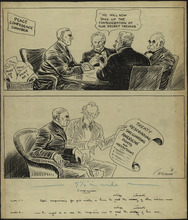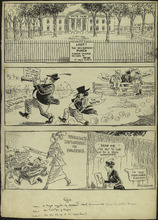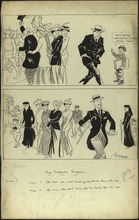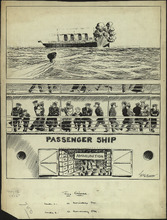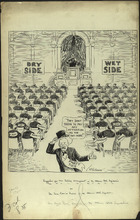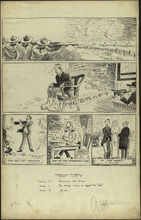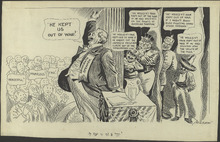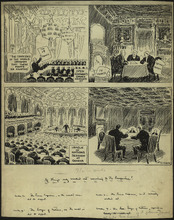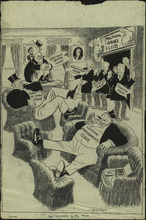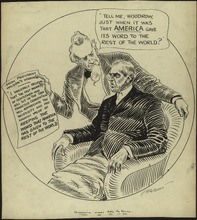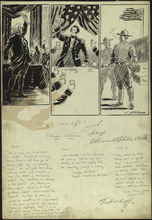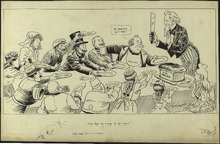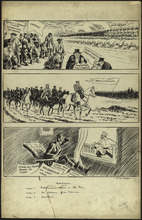JM-177: Winning the war
The cartoon depicts the personified Germany crawling his way across Europe during WWI, representing Germany's military advances during the war. The top left panel is captioned, "words won't win the war". This meant words could not be used to cause the German surrender. The top right panel is captioned, "wishes won't win the war". The panel shows Americans watching Germany from across the Atlantic, wishing the German people would overthrow Kaiser Wilhelm II. The middle-left panel shows those same Americans shouting in outrage at the Germans over American deaths from the war. The panel is captioned, "wrath won't win the war". The middle-right panel shows Americans displaying the vast wealth available for a war effort. The panel is captioned, "wealth won't the war". The bottom panel shows the Germans finally being stopped after being hit with the butt of a gun. The panel is captioned, "But wallops will win the war!". This cartoon suggests aggressive force was the only way for the United States to defeat Germany in WWI. This cartoon was created in 1917, and the US official participation in WWI was from 1916-1917. (Summary created by Mary Delano, MU History Intern, Spring 2018)


